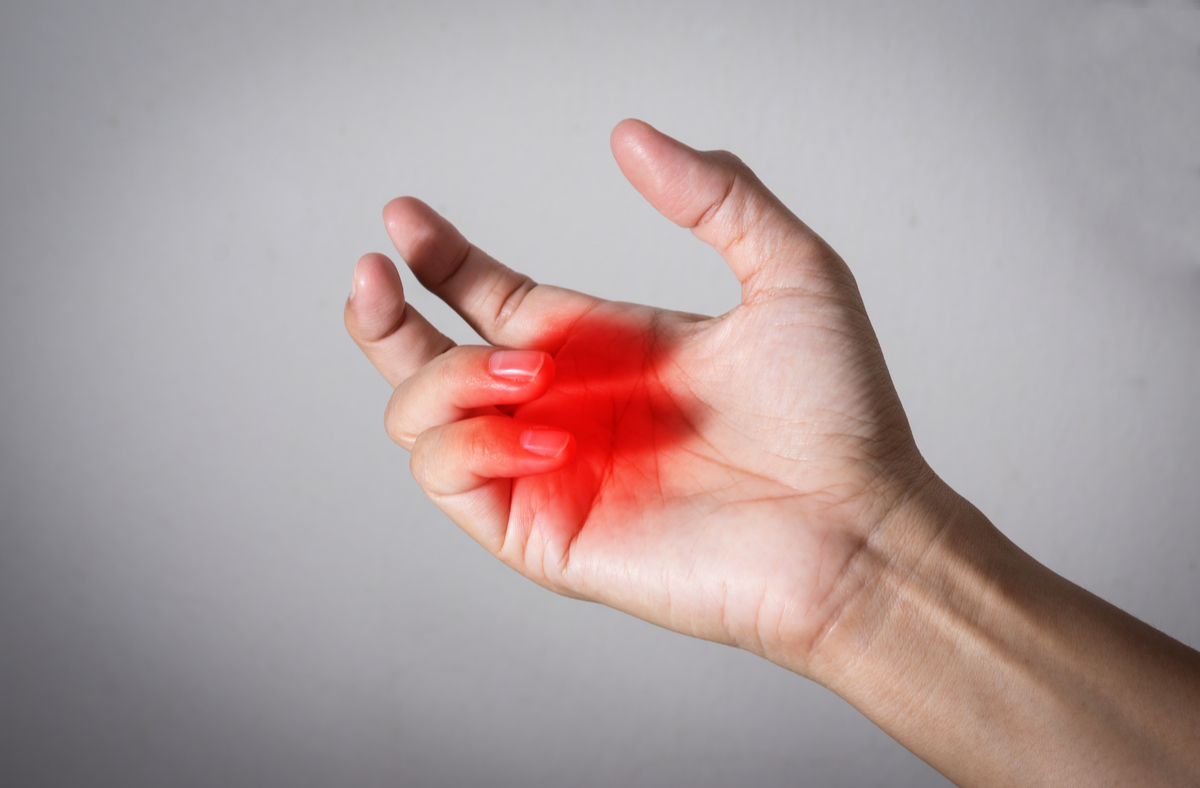What is Trigger Finger?
Trigger finger occurs when one of your fingers becomes stuck in a bent position or bends or straightens with a snap, like a trigger pull and release. Stenosing tenosynovitis is another term for trigger finger.
Trigger finger develops due to inflammation in the affected finger that narrows the space within the sheath that surrounds the tendon. In severe cases, the finger may become locked in a bent position, unable to straighten.
Any finger may be affected, including the thumb. Both hands can also be affected as can multiple fingers. A tender lump at the base of the palm side of the finger may also be present. The condition is often most pronounced in the morning after waking.
Although the exact cause usually is not known, sudden increases in hand use can sometimes contribute to the development of a trigger finger. People with diabetes, rheumatoid arthritis and women are also more likely to develop the condition.
Non-surgical/Conservative Treatments
Trigger finger treatment varies depending on the duration and severity. Nonsteroidal anti-inflammatory drugs (NSAIDs), such as ibuprofen or naproxen, may help with pain. However, NSAIDs generally will not relieve the swelling that is trapping the tendon and causing the condition.
Conservative treatments include:
- Rest. Decrease or avoid any forceful or excessive hand use activities until your symptoms improve. If you are unable to avoid these activities altogether, try to minimize them and take breaks.
- Stretching exercises. Gentle trigger finger exercises to help maintain mobility in your finger may be prescribed by your doctor. These may also include tendon gliding exercises. Often these are performed under the guidance of a hand therapist.
- Splinting. Rarely, your doctor may suggest that you to wear a splint at night to keep the affected finger in an extended position for up to six weeks. The splint can help rest the tendon.
- Steroid injection. The most common treatment for trigger finger is a corticosteroid injection (cortisone) into the affected area. An injection is made near or into the tendon sheath to reduce inflammation, allowing the tendon to glide freely again. Steroid treatment may take a day to a few weeks to take full effect and is sometimes effective for a year or longer, possibly even completely curative. However, sometimes full relief requires two injections. Steroid injections are less effective in diabetic patients and can cause a temporary increase in blood sugar levels for a few days.
Trigger Finger Release Surgery
For trigger fingers that have not been cured with non-surgical treatments, trigger finger release surgery is recommended. This minor surgery is generally performed in an “open” fashion, though in select cases it can be performed with a “percutaneous technique,” meaning no incision needs to be made.
Open Procedure
For the standard open procedure, a very small incision is made in the palm near the base of the affected finger in order to allow the t surgeon to incise the constricted section of tendon sheath, widening it and preventing the tendon rubbing that was causing the problem. This procedure can be done in a surgery center or a hospital operating room but is sometimes able to be done in the surgeon’s office. The procedure generally only takes a few minutes and the problem is extremely unlikely to recur.
Percutaneous Technique
Some patients are candidates for percutaneous trigger finger release surgery. This is most often performed in the surgeon’s office. The palm of the hand is numbed so that a needle may be inserted into the tissue around the affected tendon. The needle is used to help break apart the constriction blocking the normal gliding motion of the tendon. Recovery from this technique is generally faster, though the problem is slightly more likely to recur.
Regardless of technique, some soreness in the palm is normal after surgery. Keeping your hand elevated above the level of your heart can help reduce pain and swelling. The incision site usually heals within a few weeks; however, mild swelling and stiffness in your hand and fingers may persist for four to six months. Sometimes a short course of hand therapy after surgery is helpful to teach patients how to do home exercises without overdoing it and making the healing take longer.
Trigger finger surgery tends to be very successful, leading to resolution of the triggering, significant improvement in function, and pain relief. It is important to know that if there was a significant loss of finger motion prior to the surgery, it is possible that full motion won’t come back after the surgery. This is one reason that it’s important not to wait too long to take care of this common problem.
When to Switch From Conservative to Surgical Treatment
If conservative measures and corticosteroid injections have not provided resolution of your trigger finger symptoms, surgery should be considered. Surgery is elective and you will need to discuss this decision with your hand surgeon.
If you have any stiffness, a catching feeling, numbness or pain in a finger joint, or if you can’t straighten or bend a finger, make an appointment to discuss treatment options. Seek immediate emergency medical care if your finger joint is hot and inflamed, as these signs may indicate a more significant problem, such as an infection.

